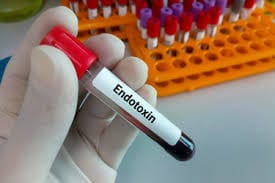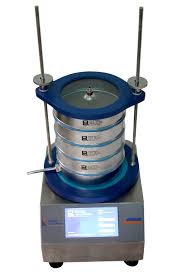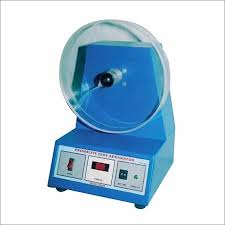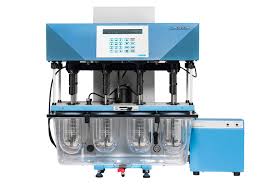|
Getting your Trinity Audio player ready... |
Q4B Annex 4A(R1)Microbiological Examination of Non-Sterile Products: Microbial Enumeration Tests
1. Introduction: Microbial Enumeration Tests
Microbial Enumeration Tests: This document represents the outcome of the Q4B process concerning the microbiological examination of non-sterile products, specifically focusing on microbial enumeration tests. These tests are an essential part of ensuring the safety and quality of non-sterile pharmaceutical products. The proposed guidelines were submitted by the Pharmacopoeial Discussion Group (PDG), a collaborative effort between international pharmacopoeias, and are designed to harmonize the microbial examination practices used in different regions.
The importance of standardizing microbiological testing methods cannot be overstated, as microbial contamination can pose significant health risks. The guidelines aim to ensure consistency and reliability in microbial enumeration testing procedures across various regulatory environments. By adopting these standardized methods, manufacturers, regulatory authorities, and other stakeholders can have confidence that the testing processes used meet high international standards.
2. Q4B Outcome
2.1 Analytical Procedures
The International Council for Harmonisation (ICH) Steering Committee, following an evaluation by the Q4B Expert Working Group (EWG), has recommended the adoption of the following pharmacopoeial texts for microbiological enumeration tests as interchangeable within ICH regions:
- European Pharmacopoeia (Ph. Eur.) 2.6.12 – Microbiological Examination of Non-Sterile Products: Microbial Enumeration Tests
- Japanese Pharmacopoeia (JP) 4.05 – Microbiological Examination of Non-Sterile Products: I. Microbiological Examination of Non-Sterile Products: Microbial Enumeration Tests
- United States Pharmacopeia (USP) <61> – Microbiological Examination of Non-Sterile Products: Microbial Enumeration Tests
These texts provide a common framework for testing procedures, ensuring that the methods used in different regions are aligned. Manufacturers can rely on any of these texts, knowing that they will fulfill regulatory requirements for microbial enumeration testing in the respective regions.
2.2 Acceptance Criteria
The proposed texts evaluated in this annex did not include specific acceptance criteria. This omission is likely due to the nature of the tests themselves, which focus primarily on the enumeration of microbial populations in non-sterile products. Acceptance criteria for microbial contamination are typically defined based on the intended use of the product, its regulatory classification, and the microbial limits prescribed by relevant health authorities.
While the annex provides guidelines for the conduct of microbial enumeration tests, it does not establish strict thresholds for acceptable microbial levels. These criteria must still be defined by local or regional authorities, based on the type of product being tested and the specific health risks associated with microbial contamination.
3. Timing of Annex Implementation
The implementation of this annex is dependent on the regulatory processes within individual regions. Once the annex is incorporated into the regulatory framework at ICH Step 5, it becomes officially applicable within that region. However, the timing of its adoption may vary by region, depending on local regulatory requirements and approval procedures. Manufacturers and sponsors should stay informed about the timeline for implementation in the jurisdictions where their products are marketed.
As each region’s regulatory body reviews and adopts the annex, the practices outlined in the document will become an integral part of the regulatory landscape for microbiological examination of non-sterile products. It is essential for stakeholders to monitor regulatory updates to ensure they remain compliant with the latest standards and practices.
4. Considerations for Implementation
4.1 General Considerations
When manufacturers or sponsors decide to update their existing methods to align with the newly implemented Q4B-evaluated pharmacopoeial texts, it is critical to follow the proper procedures for notification, variation, or prior approval. This process must comply with regional regulatory mechanisms that address compendial changes. This ensures that any modifications made to the testing methods are appropriately documented and approved by the relevant authorities.
The harmonization of these testing standards is aimed at simplifying the regulatory burden for manufacturers who market products in multiple regions. By adopting a unified approach to microbial enumeration testing, companies can reduce the complexity of their quality control procedures and improve consistency across markets.
4.2 FDA Consideration
In the United States, the Food and Drug Administration (FDA) may consider the pharmacopoeial texts referenced in Section 2.1 of this annex as interchangeable, provided they meet the conditions outlined in this document. However, it is important to note that the FDA may request that a manufacturer demonstrate that the chosen testing method is suitable and appropriate for a specific product or material, regardless of the pharmacopoeia from which the method originated.
This means that even though the methods from the European, Japanese, and U.S. pharmacopeias are considered interchangeable in principle, the FDA may require additional evidence or justification for their application in certain contexts. Manufacturers must be prepared to provide data that supports the use of these methods for their particular products.
4.3 EU Consideration
In the European Union, the monographs of the European Pharmacopoeia (Ph. Eur.) are legally binding and must be followed by manufacturers seeking marketing authorization for their products. However, regulatory authorities in the EU may accept the reference to microbial enumeration test methods from other pharmacopoeias, as outlined in Section 2.1, if the conditions specified in this annex are met.
This means that, in practice, manufacturers applying for marketing authorization, renewals, or variations in the EU may reference microbial enumeration test methods from the Ph. Eur. or from any other of the pharmacopoeias listed in the annex. This provides flexibility and helps harmonize microbiological testing practices across different regions while maintaining compliance with EU regulations.
4.4 MHLW Consideration
The Ministry of Health, Labour and Welfare (MHLW) in Japan recognizes the pharmacopoeial texts referenced in Section 2.1 of this annex as interchangeable, in accordance with the conditions set forth in the document. Once the annex is implemented in Japan, further details about the specific implementation requirements will be provided through notifications from the MHLW.
Manufacturers in Japan should closely follow the MHLW’s official guidance on the adoption of these harmonized testing methods to ensure they remain compliant with Japanese regulations.
4.5 Health Canada Consideration
Health Canada also recognizes the interchangeability of the pharmacopoeial texts referenced in Section 2.1 of this annex. Canadian manufacturers can use the microbial enumeration testing methods outlined in any of the referenced pharmacopoeias, provided they adhere to the conditions outlined in the annex.
As in other regions, it is important for manufacturers to stay informed about the specifics of regional regulatory updates and requirements. This ensures that they can confidently apply the harmonized microbial enumeration methods without facing regulatory obstacles.
5. References Used for the Q4B Evaluation
5.1 The PDG Stage 5B Sign-off Document
One of the key references used in the Q4B evaluation is the PDG Stage 5B sign-off document, which was published in the Japanese Pharmacopoeial Forum (Volume 14, Number 4, December 2005). This document outlines the conclusions of the Pharmacopoeial Discussion Group (PDG) regarding the harmonization of microbiological examination methods for non-sterile products.
5.2 Pharmacopoeial References
The following pharmacopoeial references were used in evaluating the microbiological examination methods for non-sterile products:
- European Pharmacopoeia (Ph. Eur.) 6.3 Edition – Official as of January 2009. The relevant section is 2.6.12, which deals with microbial enumeration tests for non-sterile products (reference 01/2009: 20612).
- Japanese Pharmacopoeia (JP) – The relevant section is 4.05, which focuses on microbiological examination methods for non-sterile products. This was included in Supplement I to the Japanese Pharmacopoeia Fifteenth Edition, issued on September 28, 2007.
- United States Pharmacopeia (USP) – The relevant section is <61>, which deals with the microbial enumeration tests for non-sterile products, as detailed in USP 30, official from January 2007.
These pharmacopoeial references provide the foundation for the harmonized approach to microbial enumeration testing and have been evaluated to ensure they meet the necessary standards for safety, consistency, and efficacy.















